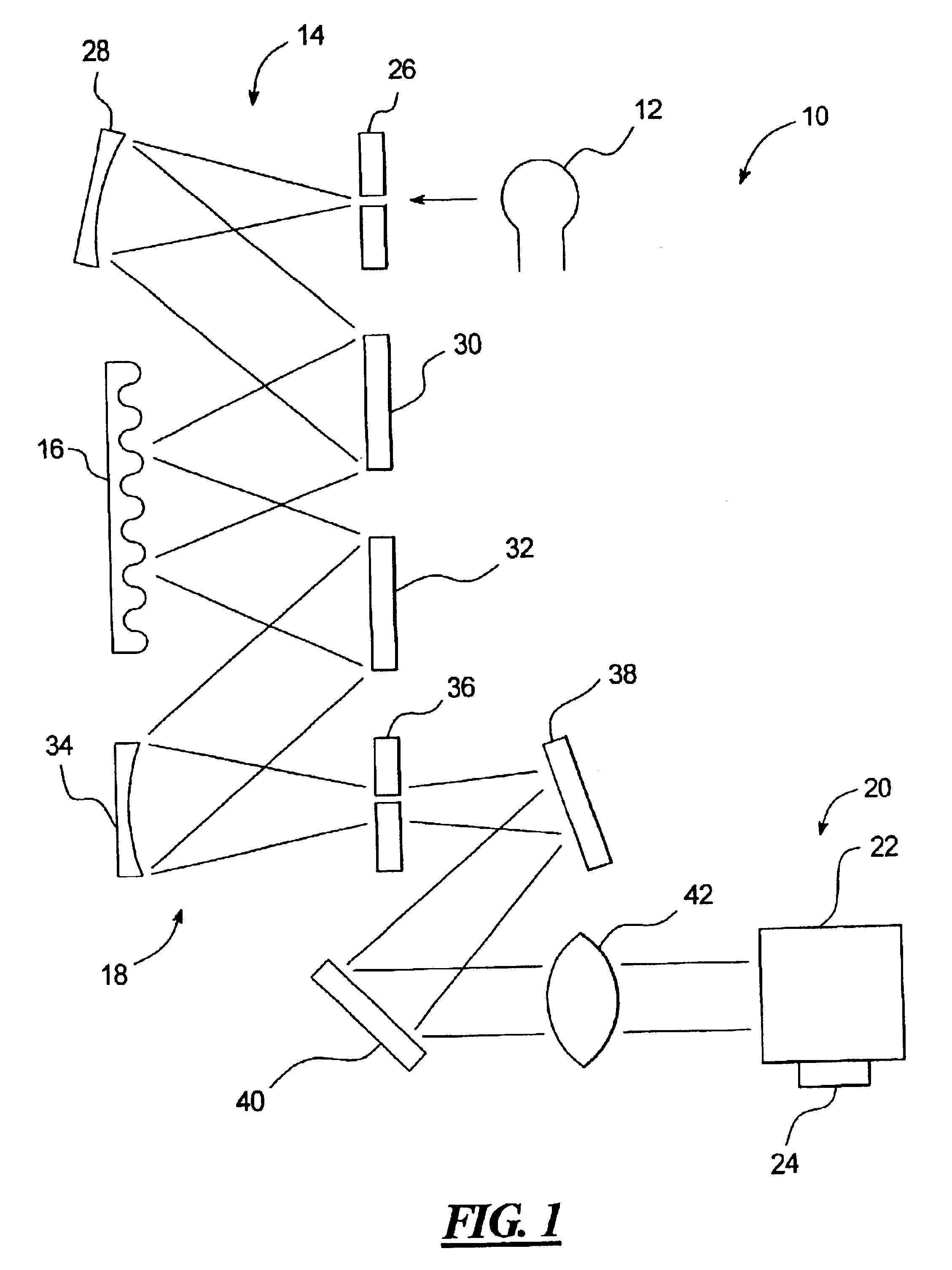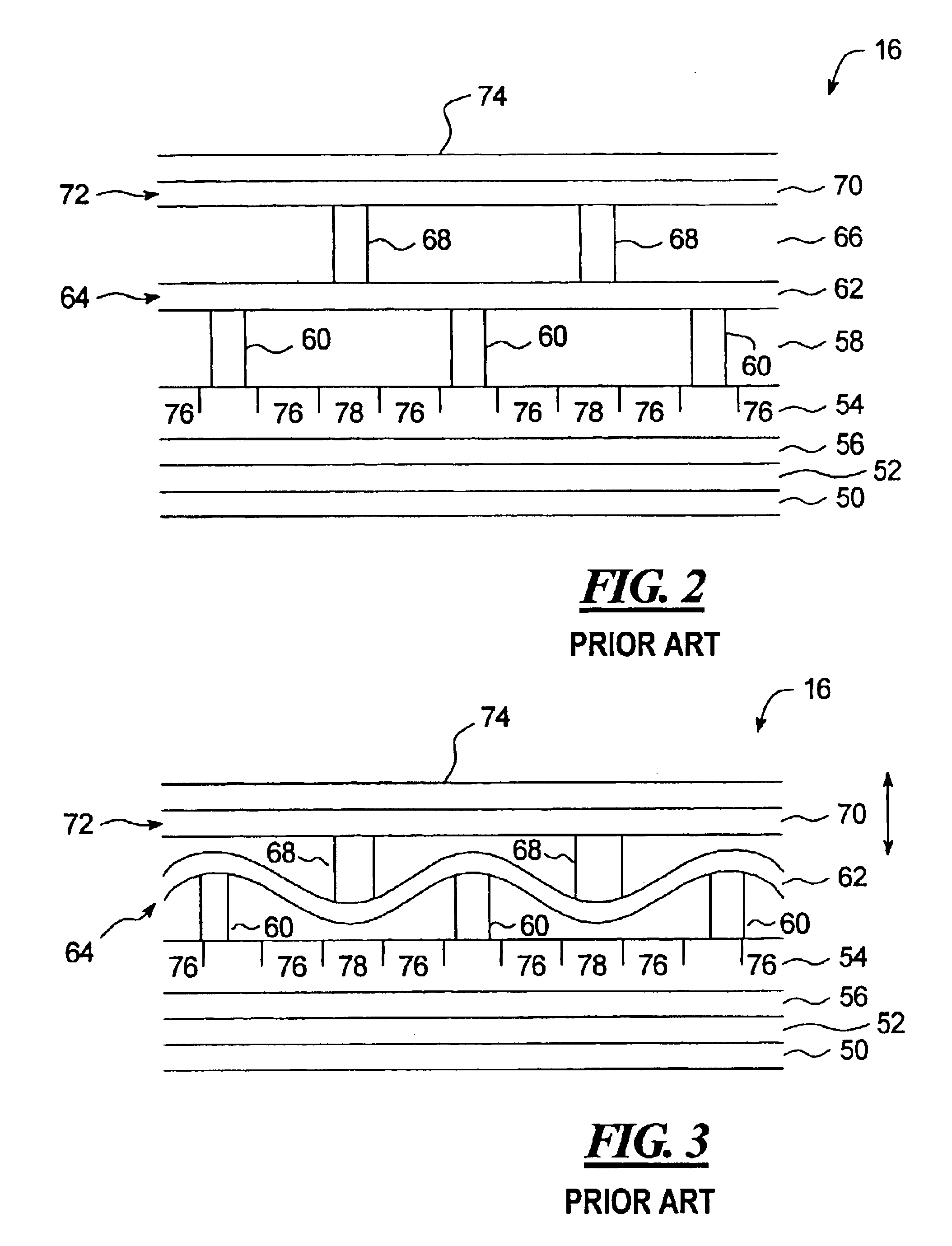Programmable diffraction grating sensor
- Summary
- Abstract
- Description
- Claims
- Application Information
AI Technical Summary
Benefits of technology
Problems solved by technology
Method used
Image
Examples
Embodiment Construction
A programmable substance detector 10 according to an embodiment of the present invention is shown in FIG. 1 and includes a light source 12. The light source 12, for example, may be a source of infrared light. The light from the light source 12 is directed along a first light path 14 to a programmable diffraction grating 16. The programmable diffraction grating 16 is controlled so as to diffract light having a multi-line spectra characteristic of a target substance. The programmable diffraction grating 16 also suitably modulates the light from the light source 12 at a predetermined modulation frequency. The diffracted and modulated light from the programmable diffraction grating 16 is supplied through a second light path 18 to a sample cell 20 holding a sample of an unknown substance, such as a gas, to be identified. The modulation imposed by the programmable diffraction grating 16 may be, for example, amplitude modulation. Alternatively, the modulation may be imposed by a separate m...
PUM
 Login to View More
Login to View More Abstract
Description
Claims
Application Information
 Login to View More
Login to View More - R&D
- Intellectual Property
- Life Sciences
- Materials
- Tech Scout
- Unparalleled Data Quality
- Higher Quality Content
- 60% Fewer Hallucinations
Browse by: Latest US Patents, China's latest patents, Technical Efficacy Thesaurus, Application Domain, Technology Topic, Popular Technical Reports.
© 2025 PatSnap. All rights reserved.Legal|Privacy policy|Modern Slavery Act Transparency Statement|Sitemap|About US| Contact US: help@patsnap.com



